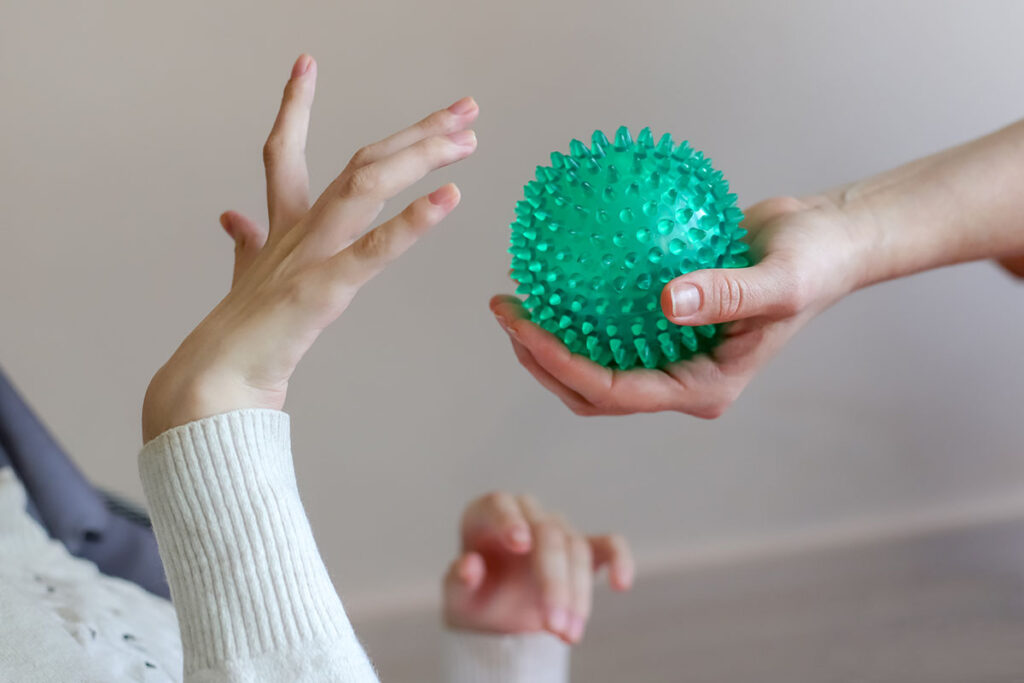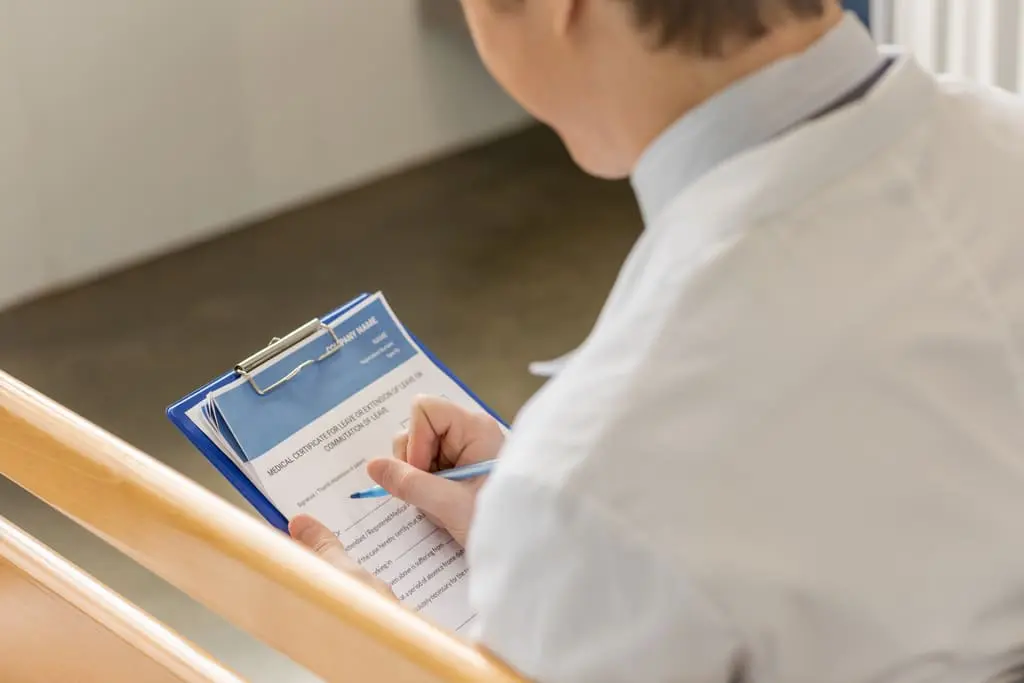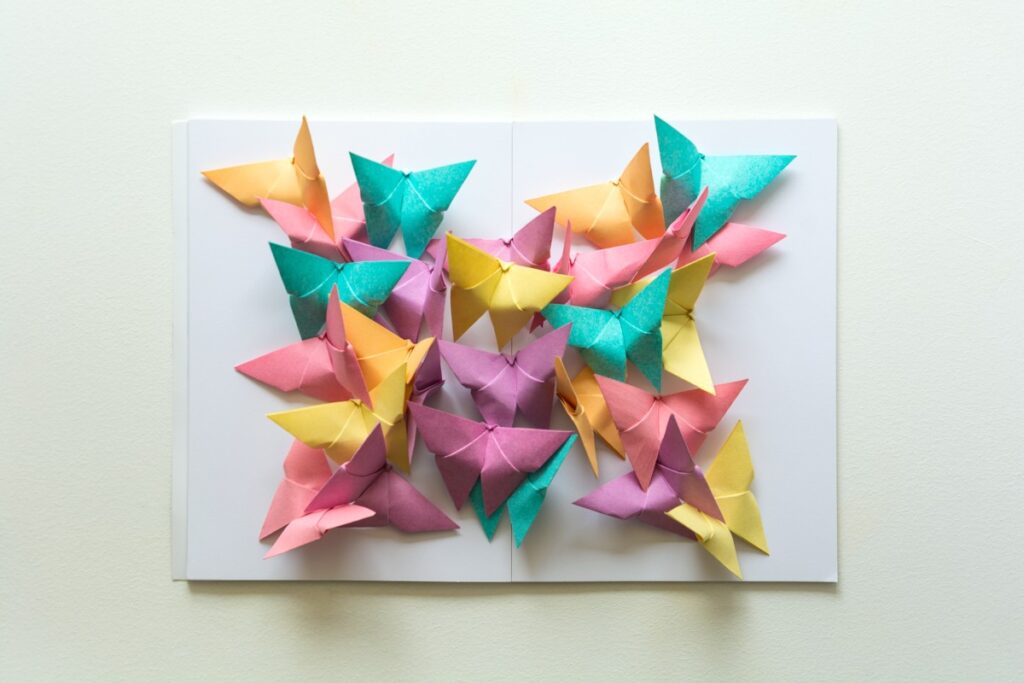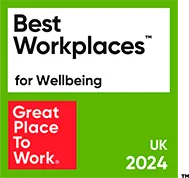Cerebral Palsy develops during or soon after birth and is usually diagnosed before a child reaches the age of 3. It can cause a variety of symptoms mainly affecting a person’s ability to move, retain balance and regulate their co-ordination. Cerebral palsy does not get worse over time, but the symptoms a person exhibits may change over the course of a lifetime.
What is Cerebral Palsy (CP)?
Cerebral palsy (CP) is a group of lifelong neurological disorders affecting motor skills, muscle tone, posture and balance. As a group of disorders, it is caused by brain damage, and is the most common motor disability in childhood. Cerebral palsy can also be caused by harm that happens before, during or just after birth and results in damage to the developing brain.
When it comes to the term “cerebral”, it means that the impairment is related to brain function, whilst “palsy” is connected to the weakness of the muscles.
Cerebral palsy refers to these related symptoms and disabilities, but every child will encounter different personal experiences. In many cases, cerebral palsy may affect children’s hearing, vision and sensation.
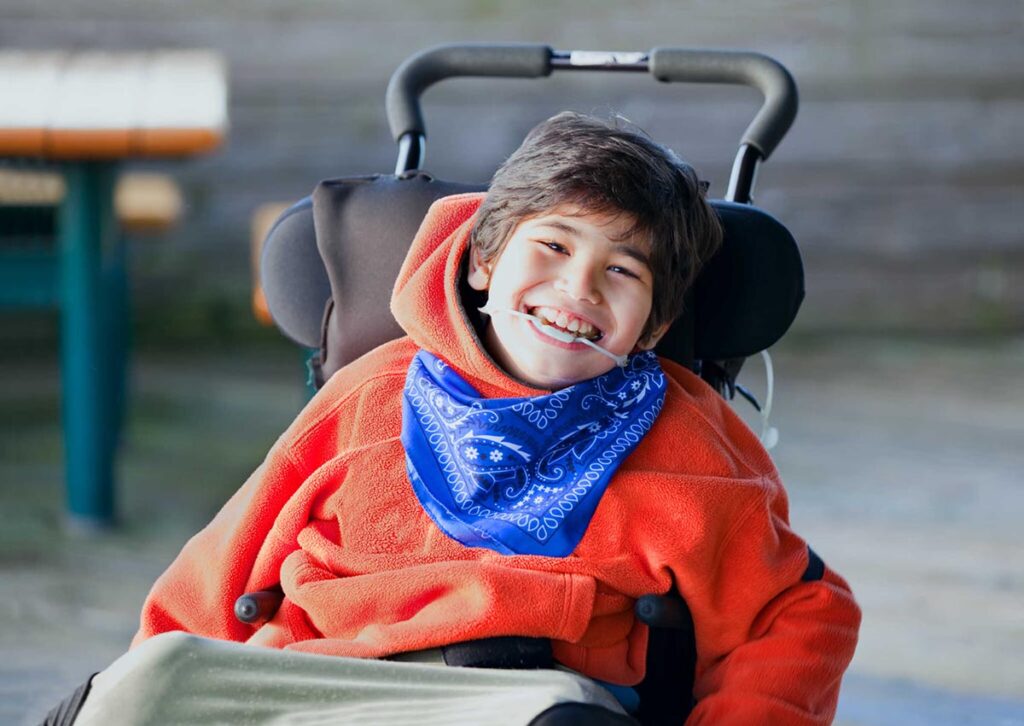
Types of Cerebral Palsy
Most people with Cerebral Palsy (CP) have congenital cerebral palsy, which means they were born with it. However, also it can appear shortly after birth, and this is known as acquired cerebral palsy.
According to the primary type of movement impairment, doctors classify cerebral palsy dependant on which areas of the brain are affected. Some movement disorders, such as stiff muscles, poor balance and uncontrollable movements, can occur. This leads to four types of cerebral palsy:
Spastic Cerebral Palsy
People with spastic cerebral palsy have improved muscle tone, indicating stiff musculature. Their body movement and motor control are affected, and an individual might have trouble walking due to tight muscles. Muscle stiffness affects some body parts, such as the legs, arms, and knees. Spastic cerebral palsy means only one side of the body is affected, or all four limbs and the face, when the most extreme form of spastic cerebral palsy occurs.
Dyskinetic Cerebral Palsy
People with dyskinetic cerebral palsy have difficulties with movement resulting in reflexive actions. The fluctuating muscle tone can make movements become uncontrollable, and sometimes this affects the face and the tongue. This results in challenges with talking and swallowing. Varying muscle tone is one of the challenges that people or children with dyskinetic cerebral palsy deal with during everyday life.
Ataxic Cerebral Palsy
Difficulties with balance and coordination are common for people with ataxic cerebral palsy creating difficulties when walking. They also face challenges in controlling their hands or arms, especially when writing, as fast movements that require a lot of control are difficult to maintain.
Hypotonic Cerebral Palsy
This type of cerebral palsy is a developmental disorder induced by damage to the cerebellum. Brain injury in hypotonic cerebral palsy occurs before, during, or shortly after birth. Hypotonic cerebral palsy affects stability problems, and can cause excessive flexibility, weak muscles, slow development and poor mobility.
Mixed Cerebral Palsy
Somebody with symptoms of multiple types of cerebral palsy might be diagnosed with mixed cerebral palsy. Children with mixed cerebral palsy have sustained damage to motor functions in several parts of the brain. Spastic-dyskinetic cerebral palsy is the most commonly diagnosed type of mixed cerebral palsy.
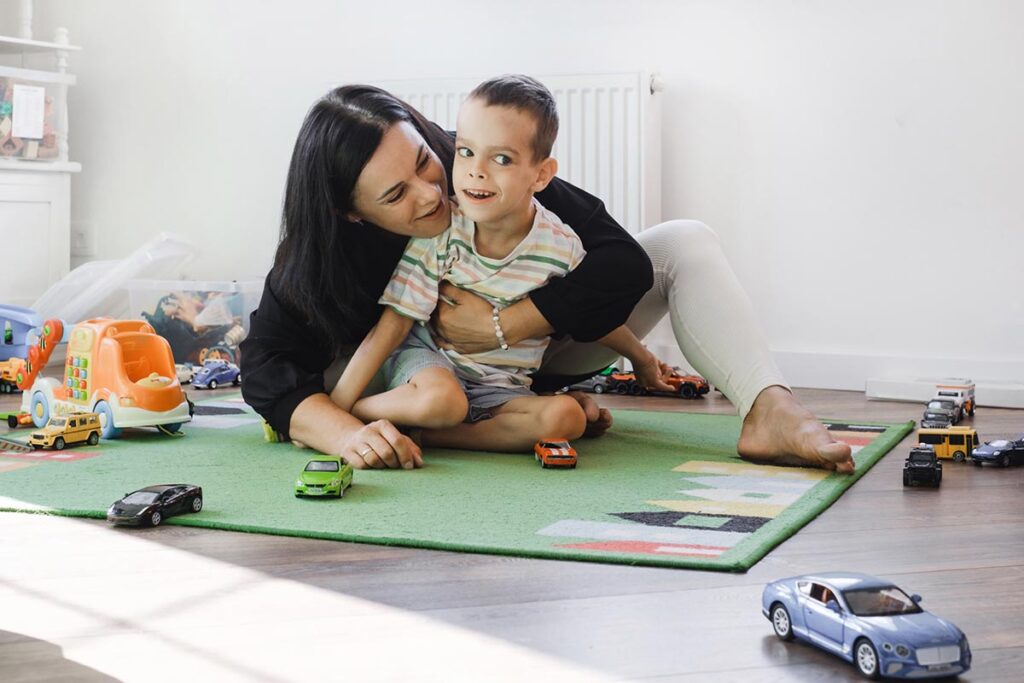

Cerebral Palsy Symptoms
The early signs and main symptoms of cerebral palsy are development, mobility and coordination difficulties. The symptoms of Cerebral Palsy are not usually visible after a baby is born. They usually become noticeable in the first two to three years of a child’s life, but that’s not always the case.
A baby born with severe cerebral palsy has irregularities with body posture, and their little bodies might be limp or very stiff. As a result of cerebral palsy, congenital disabilities such as a small head or small jawbone can appear, and symptoms can change as the child gets older.
Due to the diverse ways different body regions are impacted, the intensity of symptoms differs from child to child. Sometimes, difficulties occur with children’s legs depending on which areas of the brain are concerned.
The primary symptoms of children with cerebral palsy include:
Movement and Coordination
Due to muscle tone being directly affected, children with cerebral palsy have difficulties with movement and coordination. This happens due to the brain damage that’s occurred, and results in less neural responsiveness. The brain struggles to send the correct messages to muscles regarding how to move smoothly and in a well-coordinated way. The possible signs of cerebral palsy in children include:
development delays (not walking by 18 months or not sitting by 8 months).
motor skills difficulties
muscle spasms
very stiff or floppy muscles
weak arms or legs
hand tremors
uncontrolled and fidgety movements
tiptoeing
Speech
As we speak, we use an intricate combination of multiple muscles in our throat, neck, and face. Children with cerebral palsy face oral motor functioning challenges because cerebral palsy affects the part of the brain responsible for speech control and language.
Speech and language disorders that affect children and adults with cerebral palsy may include:
difficulties with speech
delays in speech and language development
fluency difficulties
trouble with facial expressions
Eating
Eating and swallowing difficulties are common issues that often place these children at risk for aspiration with oral feeding, which bring possible pulmonary consequences. They might have poor nutrition and mealtimes can be lengthy and stressful. Children with CP often have difficulties chewing and sucking and might struggle with excessive drooling.
Motor Development
A baby with cerebral palsy has slow motor development, including learning to crawl, roll over, sit or walk. Reflexes that generally disappear in early infancy may be present for longer, in these cases.
Other Challenges
Living with cerebral palsy might being other challenges. These are not treated as symptoms or signs of cerebral palsy, but they may include the following:
intellectual disability
learning difficulties
- mental health issues
behaviour difficulties
Adults with cerebral palsy have a risk of respiratory failure. Though the specific symptoms can fluctuate during a person’s lifetime, CP does not get worse over time.
Cerebral Palsy Diagnosis
Most children with cerebral palsy usually receive a diagnosis during the first two years of life. In cases where the symptoms are mild, a doctor may not be able to make a solid diagnosis before the age of 4 or 5 years.
If the doctor suspects that your child has cerebral palsy, the next step is to evaluate the early signs. Symptoms will be monitored, alongside a review of a child’s medical history and conducting a physical exam. If any concerns about a child’s development are raised during monitoring, then a developmental screening test should be given as soon as possible.
Depending on the specific symptoms, a child may be referred to health specialists such as a paediatric neurologist, child developmental specialist or paediatric physical medicine specialist, who will help to give a more accurate diagnosis.
To make the diagnosis and eliminate any other potential causes, a doctor must do the following tests:
Computed tomography (CT) scans
The brain is scanned using X-rays in a CT scan, which can reveal areas that might be affected.
Cranial ultrasounds
Although cerebral palsy cannot be directly diagnosed by cranial ultrasonography, other conditions can be. It provides a picture of the patient’s neurological health and detects disorders like brain haemorrhage and brain fluid that could cause cerebral palsy.
Electroencephalograms (EEG)
If a child has had seizures, a healthcare provider may request this test to rule out another condition, such as epilepsy.
Magnetic resonance imaging (MRI) scans
MRI scans can provide more precise information than CT scans about the location and severity of damage. MRI gives an image of the brain using a computer, a magnetic field, and radio waves.
A child can start undergoing therapies for cerebral palsy as soon as they are diagnosed with cerebral palsy. Although there is no specific treatment, your doctor might suggest physical therapy and muscle-strengthening training.
Causes of Cerebral Palsy
The cause of cerebral palsy is abnormal development of the brain or brain damage. Problems during labour and delivery may increase the risk of cerebral palsy. There are several potential causes of abnormal brain development.
As we already mentioned, brain damage can occur before a child is born, at birth or early childhood. In many cases, the causes are unknown, but the factors that can lead to cerebral palsy include:
Bacterial and viral infections such as meningitis
Bleeding in the brain (haemorrhaging)
Lack of oxygen to the brain (asphyxia) before, during, or after birth
Head injuries sustained during birth or within the first few years of infancy
Prenatal exposure to raw/undercooked meat or fish
Prenatal exposure to drugs and alcohol
Specific problems that might occur during delivery can also increase the risk of cerebral palsy such as premature birth and low birth weight, and many other risk factors affecting these children. The National Institute of Health-funded research is responsible for advancing clinical knowledge concerning cerebral palsy (CP), including discovering novel causes and risk factors, medications to treat stiff and spastic muscles, and improved administration techniques.
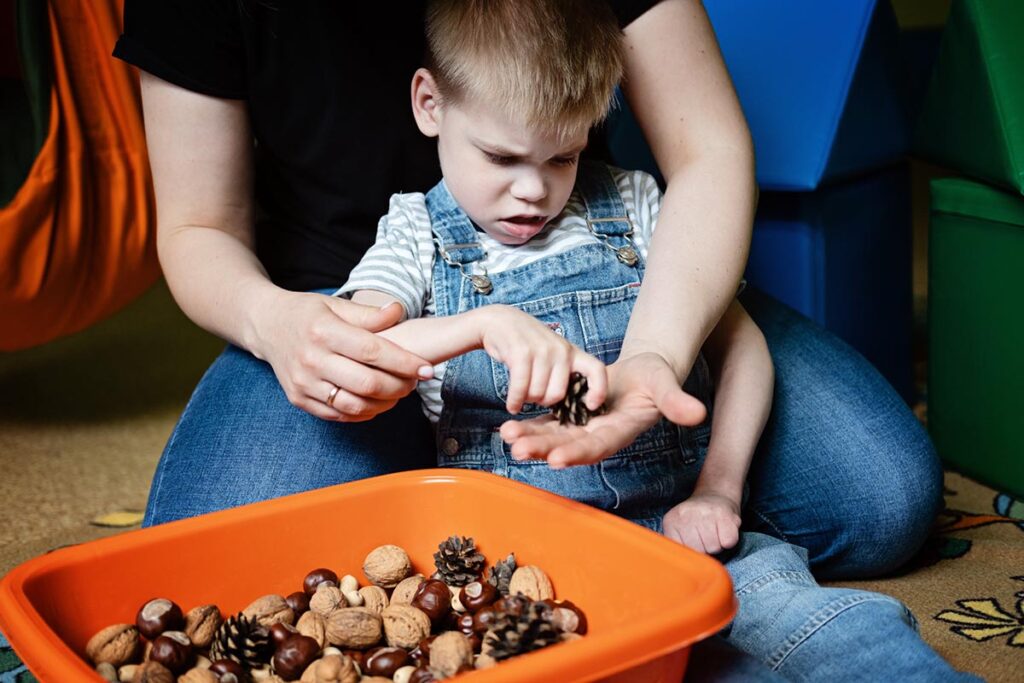

Cerebral Palsy Caused by Medical Negligence
Medical negligence or malpractice can lead to cerebral palsy; but this is preventable. Medical negligence occurs as a result of inadequate care from health professionals.
Medical negligence at birth, malpractice, and mistakes made immediately after delivery can cause cerebral palsy. There are cases where the failure of health professionals to perform their duties during childbirth can cause a child to develop cerebral palsy. Medical negligence can include:
Injury during birth
Neglecting to diagnose health issues
Lack of proper treatment
When it comes to cerebral palsy, there is no cure, and the children concerned will have it for the rest of their lives which directly affects their quality of life.
Where cerebral palsy is caused by medical negligence, families can get legal support for their child, that will help them to guarantee they will have the financial means to support their child’s condition properly. In the delivery room, clinical experts are educated to give their patients high-quality care.
Associated Conditions with Cerebral Palsy
Children affected with cerebral palsy often have coexisting health conditions in addition to cerebral palsy. These other health conditions can affect areas of the brain related to learning.
Among the associated conditions are the following:
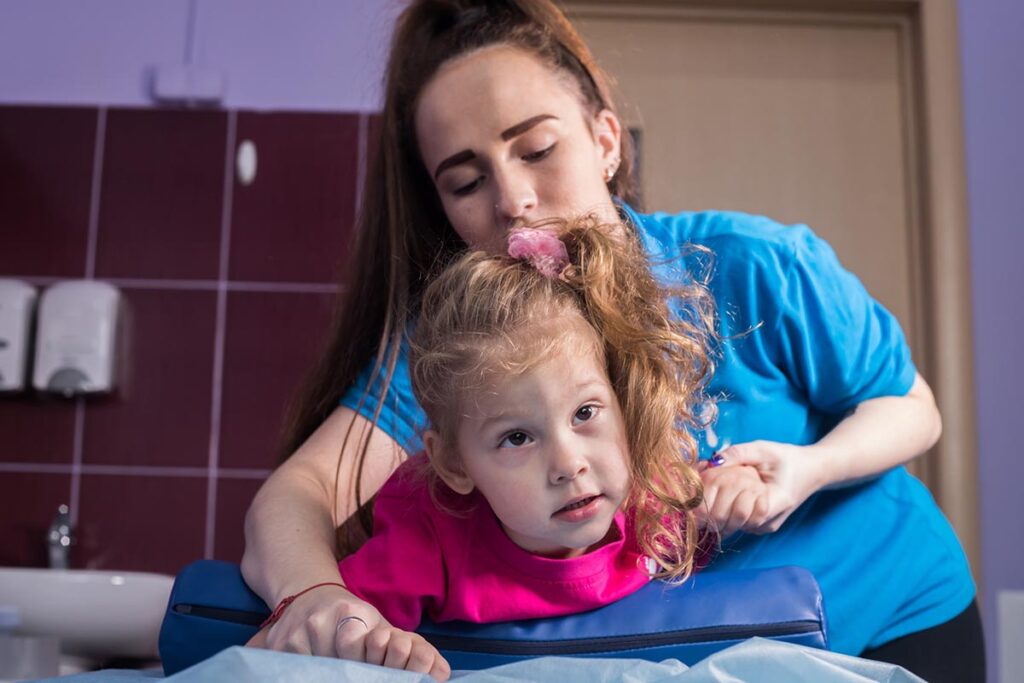

intellectual disabilities
epilepsy
hearing impairment
visual impairment
communication difficulties
eating difficulties
drooling
continence challenges (using the toilet)
sleep disorders
High quality support planning can assist with most aspects in order to improve or stabilise them.
Cerebral Palsy Treatment
Cerebral palsy treatment mainly puts the focus on nurturing the child’s remaining skills, which can lead to reducing the symptoms and improving the quality of life with more independent living. Babies with cerebral palsy may need early medical intervention to support brain development.
People with cerebral palsy require lifelong care from a team of professionals. Mental health specialists and therapists can be included in the health professionals for special attention to those needs if required. They can design support plans to help enhance people’s quality of life.
Treating symptoms early, actively and effectively are the best way to enhance someone’s quality of life.
Different treatments can include:
Physiotherapy
Physiotherapy is the first step or approach in treating cerebral palsy since it can enhance motor skills and can prevent movement issues from getting worse over time. This therapy implements massages, flexibility and muscle strength exercises, and heat treatment. The benefits from physiotherapy can be noticed in the child’s balance, coordination, strength and mobility.
Speech Therapy
Speech therapy for cerebral palsy frequently focuses on helping children learn how to create specific sounds with their mouths by strengthening their mouth muscles. This therapy can help children use words properly, communicate their thoughts, reduce pronunciation issues and focus on a better understanding of language.
Occupational Therapy
Occupational therapy enables a child to manage everyday activities, like getting dressed, eating, or using the toilet. It optimises the upper body function, the child’s cognitive ability and motor skills so that the child can work towards more independence.
Medicines
Different types of medicine can be used when treating the symptoms of cerebral palsy, including seizures, reflexive movement and spasticity.
Surgery
Surgery for cerebral palsy can fix or enhance difficulties with movement in the arms, legs, hips, and wrists. Surgeries are performed on muscles, ligaments, bones, and nerves to enhance movement in those body parts.
Assistive Communication Devices
People with cerebral palsy who have trouble speaking, hearing, or seeing can benefit from specialised assistive devices, including eye-tracking gadgets, electronic message boards, and typing assistance.
Cerebral Palsy Life Expectancy
Children born with a cerebral palsy diagnosis can have a normal lifespan, and it’s important for people to experience early intervention, focus and proactive care that enhances their quality of life.
Many parents are concerned about improving their children’s lives with cerebral palsy and their life expectancy. And this is linked to the severity of the child’s situation, such as mobility challenges.
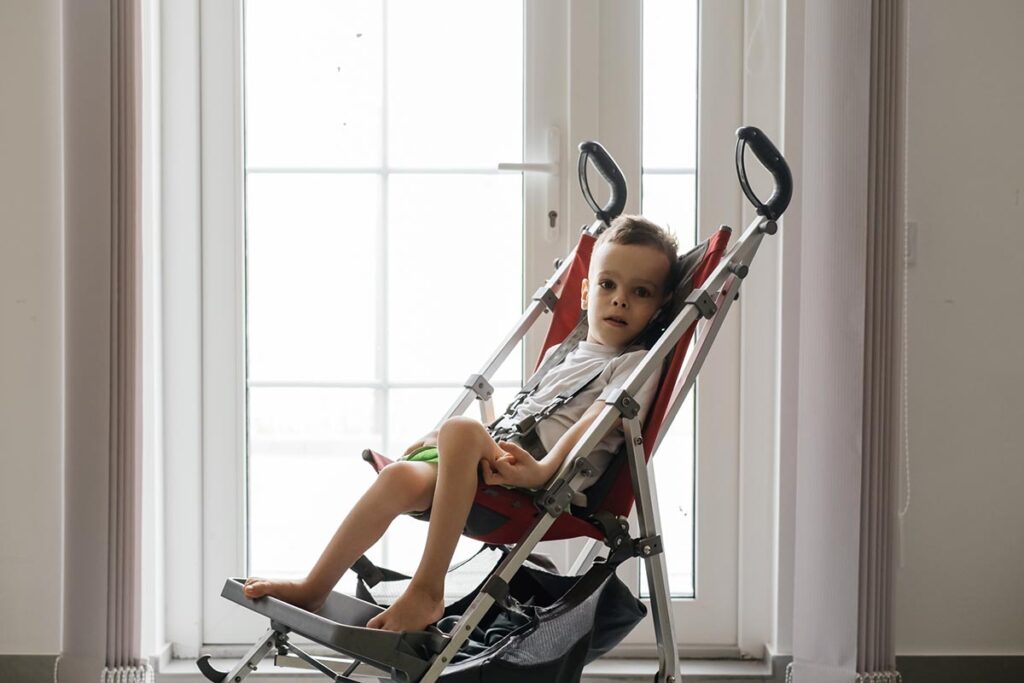

Cerebral Palsy Care with Leaf Complex Care
At Leaf Complex Care, we are reframing how we support the people who use our services. We are all people at first, and it’s our priority to humanise our work and services.
We know that a support plan for one person might not be suitable for another because each person experiences their disability differently. Therefore, our home care is specifically tailored to each person’s needs, with a focus on people’s individual strengths.
This enables our compassionate support workers to deliver support that upholds the high standards we set for ourselves, meeting the needs of the people we support.
Our expert team can guide you through all the support options and will also detail how we will develop a suitable, person-centred care plan and pair you with a support worker who will work with you and your loved one in a positive, proactive way.
We are here to help you throughout every phase of your care journey with us. Contact us now; we are just one call away.
Quick Summary
Cerebral palsy means weakness or challenges with using muscles in the body. CP is caused by abnormal brain development or damage to the developing brain, affecting a person’s movements and resulting in stiff/flexible muscles.
A baby who weighs less than 5 pounds is at higher risk of developing cerebral palsy. This risk increases with low birth weight, premature birth, etc.
Cerebellum damage is the most frequent cause of cerebral palsy resulting in hypotension. The cerebellum receives signals from the spinal cord and other brain regions to control motor movements.
People diagnosed with cerebral palsy undergo several tests the doctor prescribes, such as CT scans, MRI, cranial ultrasound and EEG.
There is no cure for cerebral palsy, but a person’s quality of life can improve with treatment that may involve medical or surgical input, including physiotherapy and other therapies.
The support workers at Leaf Complex Care are here to support children and adults with cerebral palsy by creating individualised support plans that give them the assistance they need to live more independently.
Call us today and start your care journey with us.

